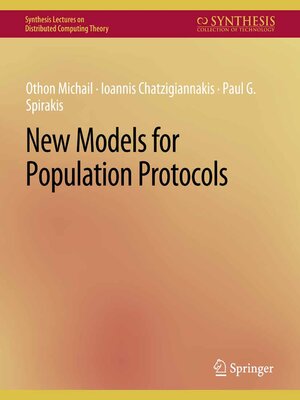New Models for Population Protocols
ebook ∣ Synthesis Lectures on Distributed Computing Theory
By Othon Michail

Sign up to save your library
With an OverDrive account, you can save your favorite libraries for at-a-glance information about availability. Find out more about OverDrive accounts.
Find this title in Libby, the library reading app by OverDrive.



Search for a digital library with this title
Title found at these libraries:
| Library Name | Distance |
|---|---|
| Loading... |
Wireless sensor networks are about to be part of everyday life. Homes and workplaces capable of self-controlling and adapting air-conditioning for different temperature and humidity levels, sleepless forests ready to detect and react in case of a fire, vehicles able to avoid sudden obstacles or possibly able to self-organize routes to avoid congestion, and so on, will probably be commonplace in the very near future. Mobility plays a central role in such systems and so does passive mobility, that is, mobility of the network stemming from the environment itself. The population protocol model was an intellectual invention aiming to describe such systems in a minimalistic and analysis-friendly way. Having as a starting-point the inherent limitations but also the fundamental establishments of the population protocol model, we try in this monograph to present some realistic and practical enhancements that give birth to some new and surprisingly powerful (for these kind of systems) computational models. Table of Contents: Population Protocols / The Computational Power of Population Protocols / Enhancing the model / Mediated Population Protocols and Symmetry / Passively Mobile Machines that Use Restricted Space / Conclusions and Open Research Directions / Acronyms / Authors' Biographies







